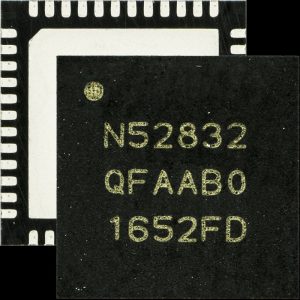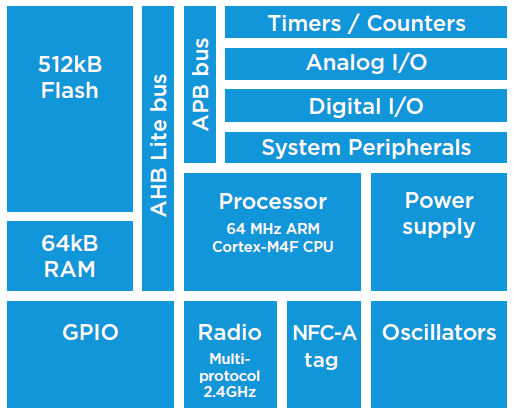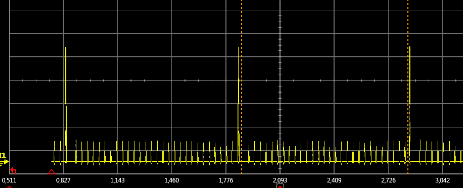This is part 2 of a 3 part series that explains what’s inside a beacon. In this part we take a look at the System on a Chip (SoC), in particular the Nordic nRF range, found in many beacons.
In part 1 we identified the Nordic nRF52832 SoC. The nRF52 is a newer version of the Nordic nRF51 that has been used in millions of beacons. The new version has more memory, uses less power and includes NFC. The extra memory is useful for applications such as Bluetooth Mesh.

The Nordic nRF52832 SoC wasn’t created just for beacons. It’s a general purpose device for any electronics that needs to have 2.4GHz wireless communications and software processing. The nRF51 and nRF52 series can be found in many fitness trackers and wearables. For example, the BBC micro:bit, the Polar GPS multisport watch and Garmin’s child activity monitor.
The SoC is a stand alone computer having an ARM® Cortex™-M4 CPU with a floating point unit. The NFC-A Tag can be used in pairing and payment solutions which makes it suited for use with smartphone apps. The SoC also has digital peripherals and interfaces such as PDM and I2S for digital microphones and audio.

It has very low power consumption via an on-chip adaptive power management system. It uses between 0.3 μA and 1.9 μA, depending on the mode, and can still respond to events. For beacons, it periodically wakes up for about 1ms, during which it uses about 5.3 mA (at 0 dBm power output).

The SoC supports ANT™, IEEE 802.15.4, Thread, and proprietary protocols operating in the 2.4 GHz bandwidth as well as Bluetooth®.
The marking on the chip denotes the variant with different RAM and flash combinations:
nRF52832-QFAA 64 kB 512 kB
nRF52832-QFAB 32 kB 256 kB
nRF52832-CIAA 64 kB 512 kB
The image in part 1 shows the i7 beacon has the QFAA variant with 64 kB RAM 512 kB Flash. As with SSDs, the flash can only be erased and written so many times. For the nRF52832 this is 10,000 erase/write cycles. This is irrelevant for most beacons as they save very little data, irregularly, usually only when settings are changed. However, for applications such as mesh, the number of erase/write cycles needs to be minimised to prevent the device wearing out in a short period of time.